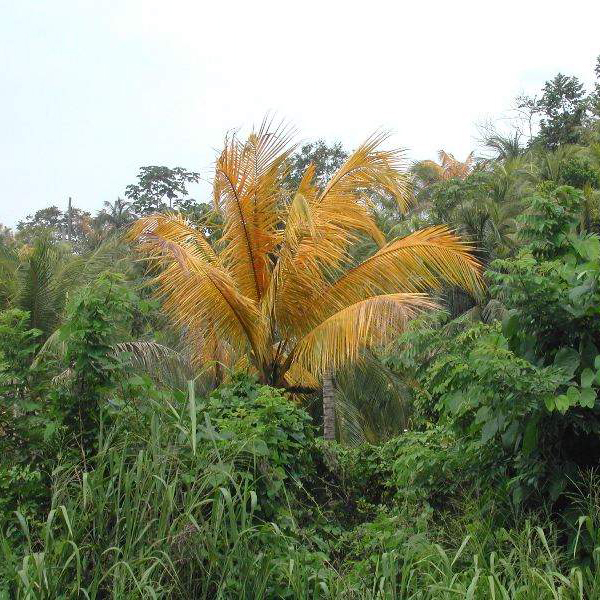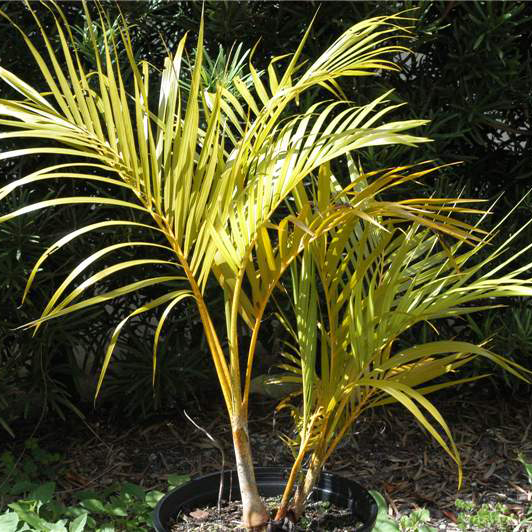-

When toxic chemicals, including toxic concentrations of essential elements such as boron or copper, are taken up by the root system, all but the youngest leaves typically show leaflet tip necrosis. The base of these leaves usually remains green. If toxic chemicals are…
Copper toxicity on Acoelorrhaphe wrightii leaves -

There are 36 palm species susceptible to lethal yellowing. Field diagnosis is based on a series of symptoms. No single symptom is diagnostic of lethal yellowing. Rather, it is the appearance and chronological progression of symptoms that accurately identifies the disease.
Leaf yellowing symptoms on Cocos nucifera -

Nitrogen (N) deficiency begins as a uniform light green discoloration of the oldest leaves, seen in the golden-yellow color of the crownshaft, petiole and rachis. As the deficiency progresses, younger leaves will also become discolored.
N deficient Dypsis lutescens
Symptoms of Palm Diseases and Disorders
This tool is designed to help users make a preliminary field diagnosis of a palm problem and is based solely on visual symptoms for two primary reasons. First, visual symptoms are sufficient to diagnose many palm problems, especially physiological disorders such as nutrient deficiencies. Second, visual symptoms are the first step in determining which diagnostic lab to use for further analysis and which tissue should be sampled for analysis. In addition to fact sheets and images, since palms are monocot trees, with a different anatomy from hardwood trees, a glossary is provided with links from the fact sheets, as well as a diagram of palm anatomy.


